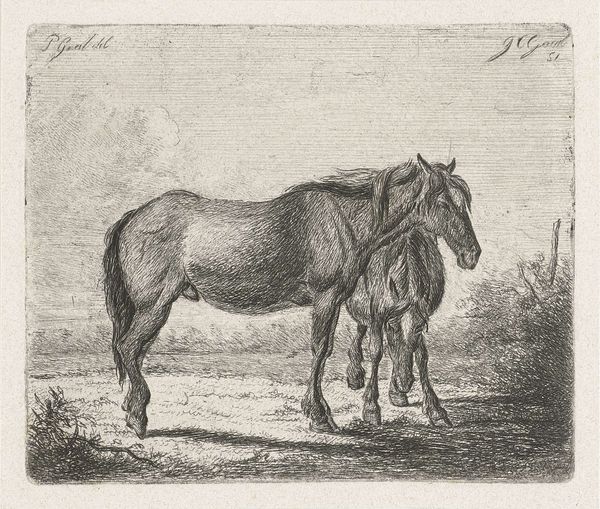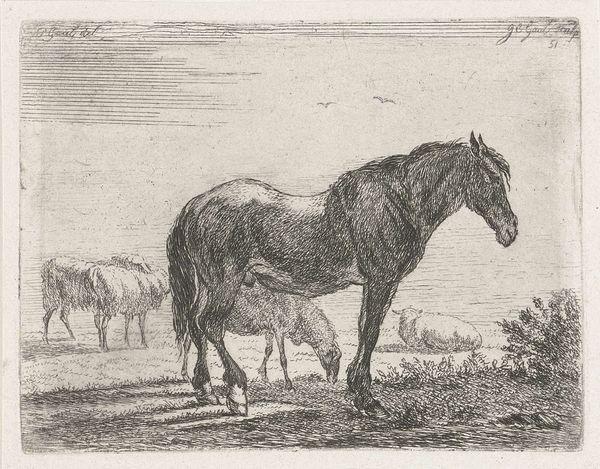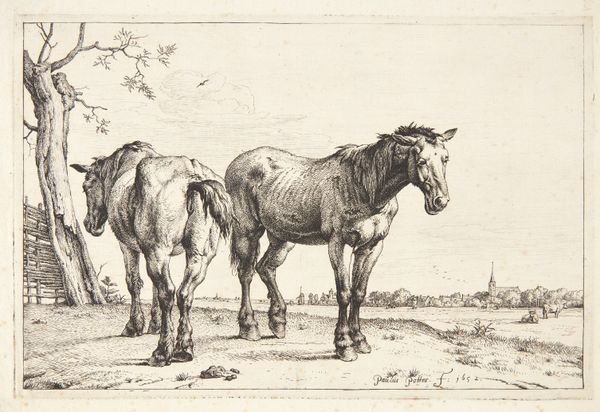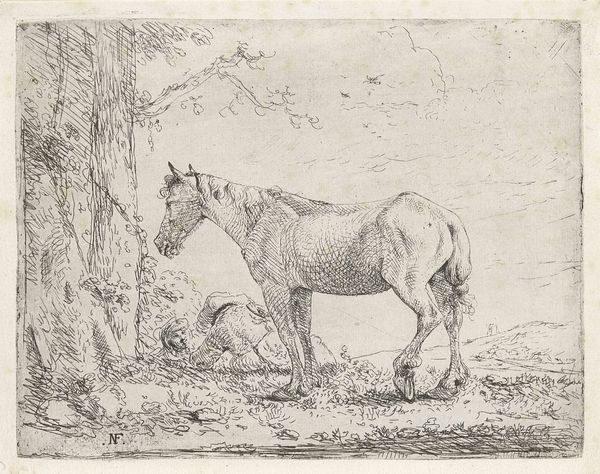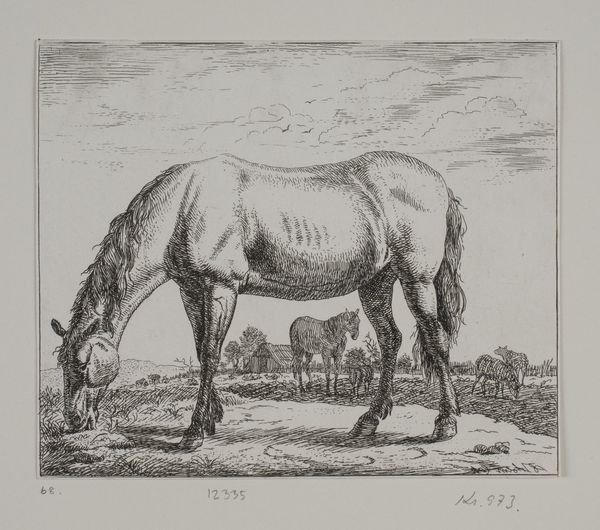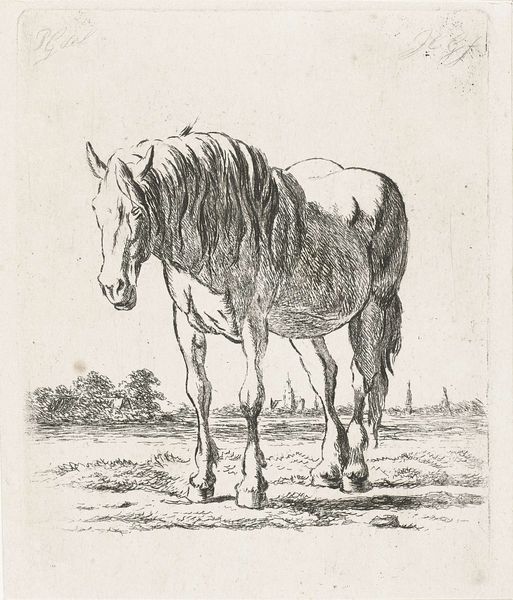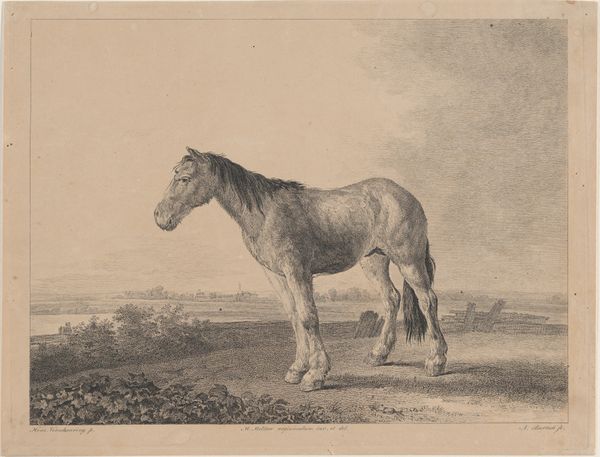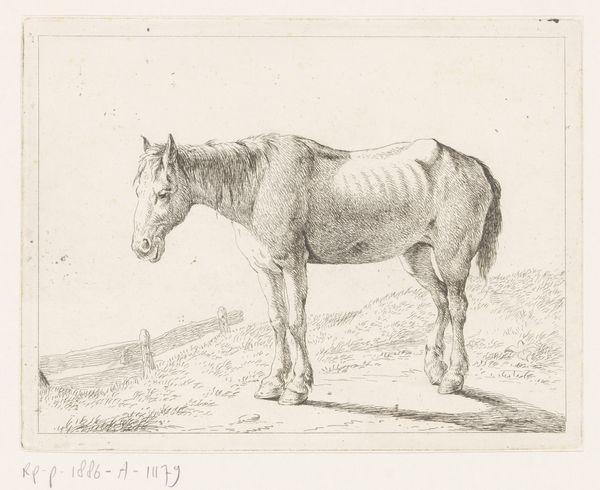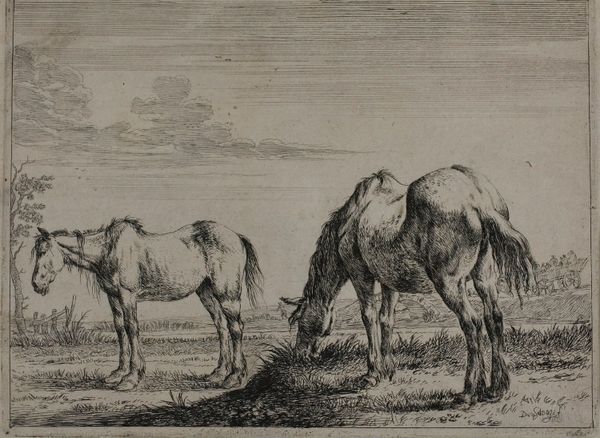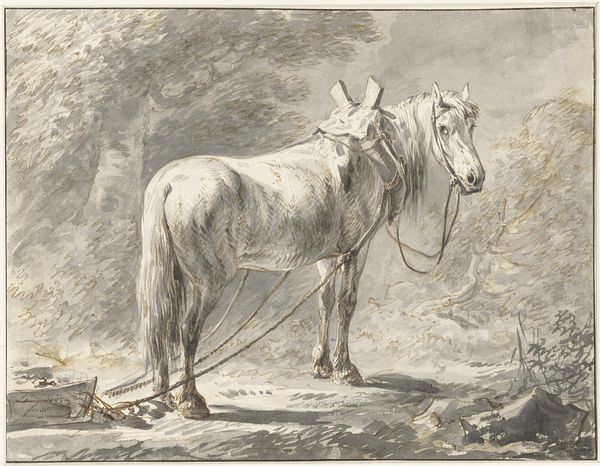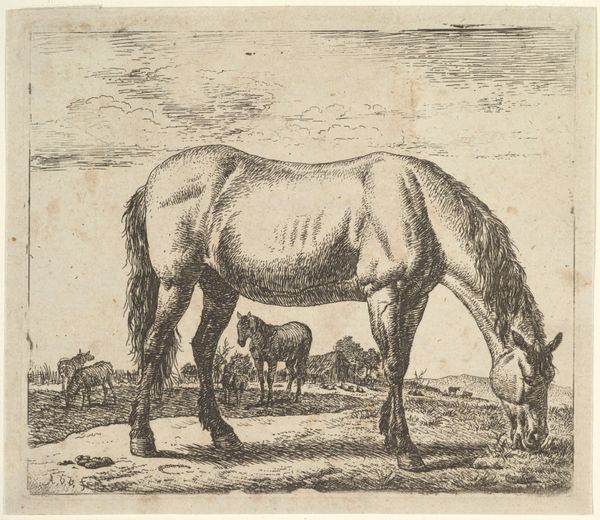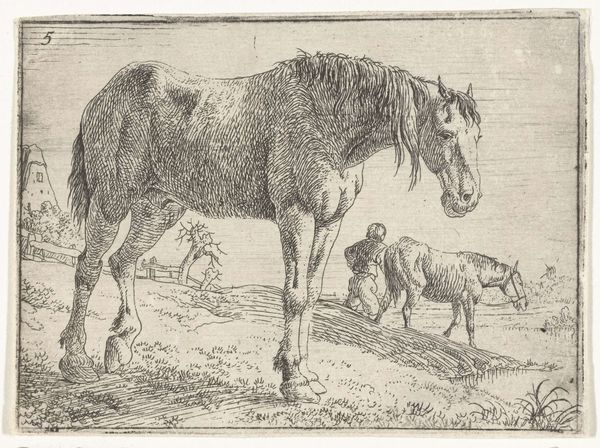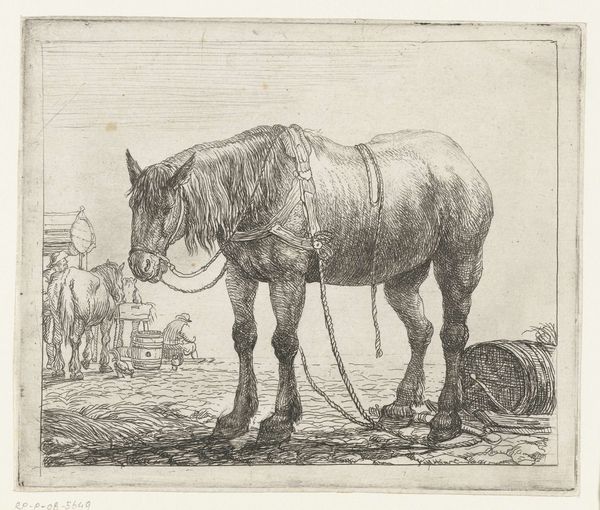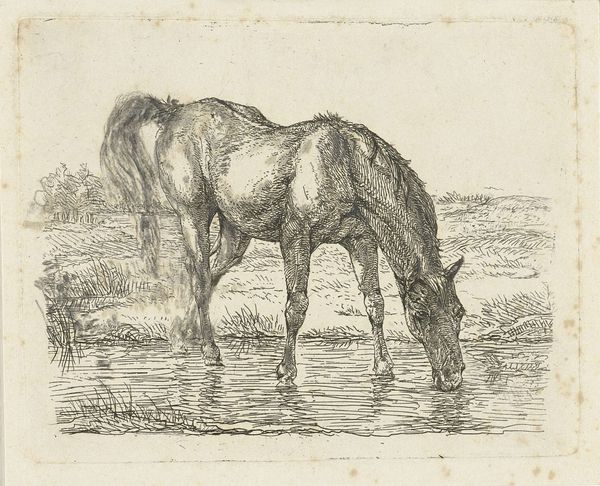
drawing, print, etching
#
drawing
# print
#
etching
#
landscape
#
horse
#
genre-painting
#
realism
Dimensions: height 93 mm, width 110 mm
Copyright: Rijks Museum: Open Domain
Curator: Before us we have "Two Horses," an etching crafted in 1851 by Jacobus Cornelis Gaal, now held within the Rijksmuseum. What’s your initial impression of this scene? Editor: I find it rather somber. The limited tonal range emphasizes the heft of the foreground horse, contrasting with the bleak landscape etching, especially given the vulnerable position of the horse nestled behind. Curator: Indeed. Gaal situates these horses within a broader tradition of animal depictions as signifiers of status, labor, and the complex relationship between humans and the natural world. We need to consider that at the time, horses were symbols that reinforced a certain political economy. Editor: Absolutely. This period saw increasing urbanization, but agrarian life remained central to Dutch identity, yet how might class impact one’s access to the type of landscape represented here? Curator: That's precisely where considering intersectional readings becomes potent. Notice the deliberate use of shadow to obscure the lower half of the animals’ bodies, and how that might draw viewers to focus more on their posture as potential sites of strength and sensitivity. Also, horses frequently served in wars. Editor: Yes, the use of shadow evokes a mood, while also suggesting forms of control. What looks like an almost objective study is really constructed through a lens of access, control, and implied power dynamics. Curator: Consider too, the rise of landscape painting in Dutch art and the potential implications that arise when Gaal uses a traditionally idealized pastoral setting as backdrop. Does he disrupt norms or further expectations tied to gender and class in 19th century Holland? Editor: That context of disruption feels particularly salient. Looking closely at this work encourages critical consideration of not just the technical aspects of its production but also its cultural and social currency at the time. Curator: Right, seeing the intersection between visual expression and societal narrative is so essential for true understanding. Editor: Examining this piece prompts important conversations about the politics of representation and how artists subtly reinforce and reflect power structures in the process.
Comments
No comments
Be the first to comment and join the conversation on the ultimate creative platform.
